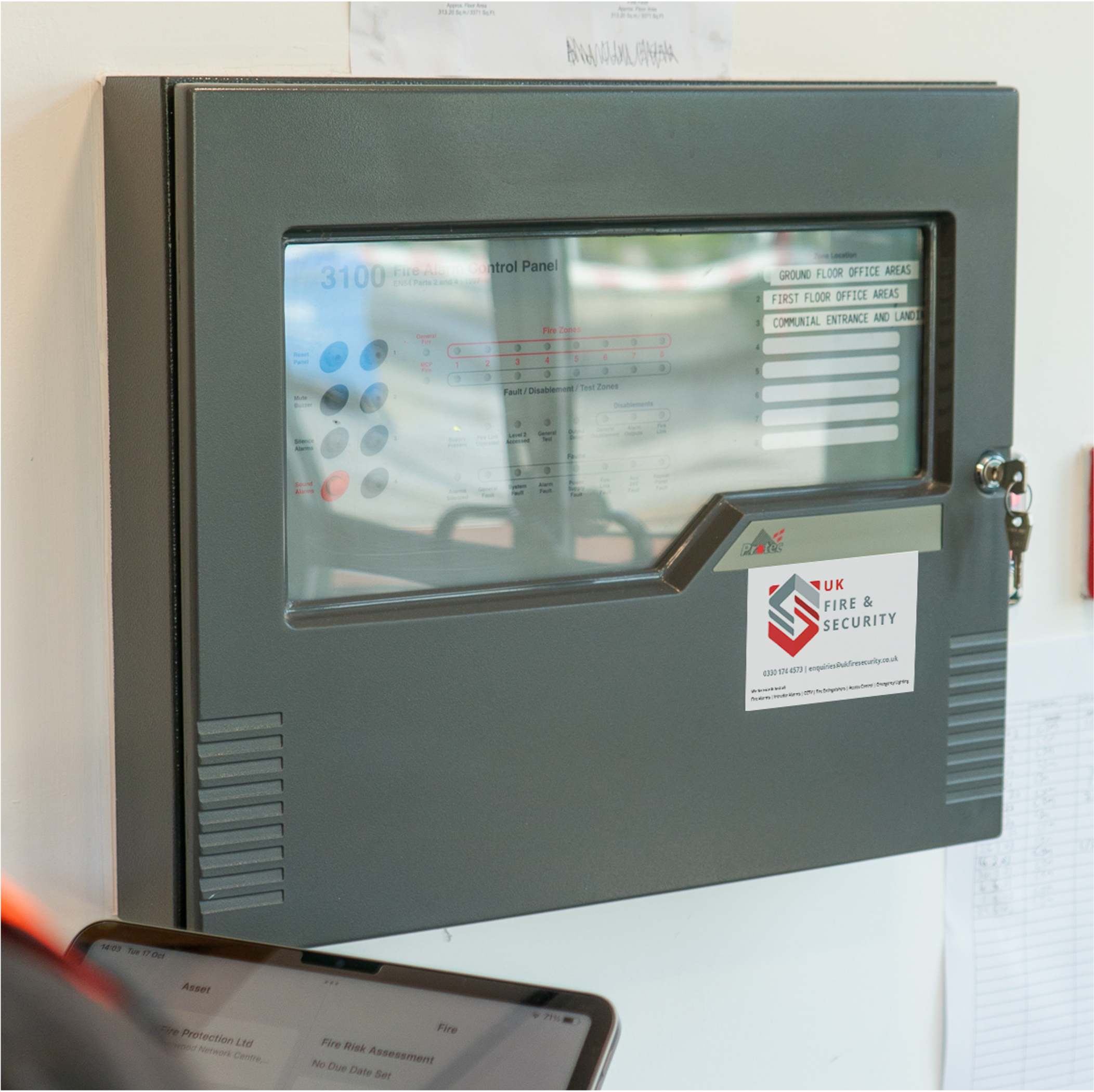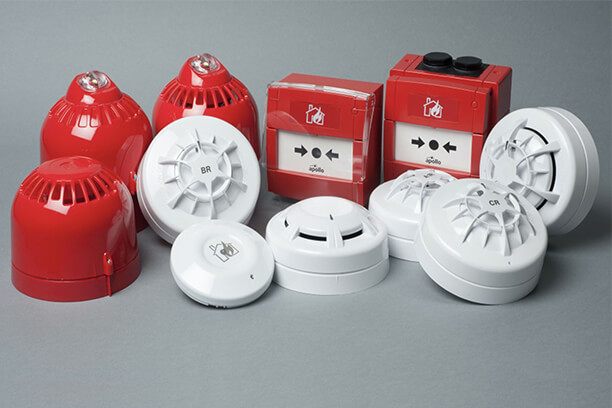Fire Detection Systems are a necessity for all business premises. They are a vital tool in ensuring the fire safety of you, your property and the people within it.
If a fire emergency does occur, it’s vital that it is detected as quickly as possible, and those within the building are alerted to evacuate promptly and safely.
Any Fire Detection System installed on site should be appropriate for the demands of your building.
To help you better understand how Fire Detection Systems operate and help keep you safe, read our team of fire safety experts answers to some key questions.
What Are Fire Detection Systems?
Fire Detection Systems are life saving systems installed into buildings to effectively alert occupants in the event of a fire.
Typically systems are made up of Automatic Fire Detectors (For smoke and heat etc.), manual call points on every floor, electronic sirens or bells to alert occupants quickly and then a control and indicator panel to clearly identify where the activation took place to help with incident respond.
Which system is found in a particular building is determined by various factors. There are different types of Fire Detection System, with each one designed to be installed in certain environments.

What Are The Different Fire Detection Systems?
Fire Detection Systems can be divided into three different categories.
M Systems
M Systems are manual systems. This means that they must be activated and rely on a person doing so upon discovery of a fire. Usually this involves break glass units which are installed in key locations around the premises. Triggering one of these manual units then activates the whole system across the building.
L Systems
Category L systems are for life protection. There are five different L fire detection systems available.
L1 Systems –These systems aim to provide the earliest possible warning for occupants. Detectors will be found in most, if not all, locations within the building. Some areas of low risk such as toilets may not be covered.
L2 Systems – L2 Fire Detection Systems have detectors in high-risk areas, such as kitchens, and in any areas that form part of the escape routes.
L3 Systems – The aim with L3 Systems is to give early warning to everyone within the building. Detectors are located in escape routes, and all rooms that lead into escape routes.
L4 Systems – L4 Systems place detectors in escape routes and are usually found within low-risk environments where all occupants could evacuate quickly in the event of a fire.
L5 Systems – An L5 System involves any localised protection. This involves coverage in high-risk areas, or coverage within areas that are specialised such as server rooms. To remain cost efficient, it can be possible to install an L5 system in these specific areas but have the rest of the building protected up to L4 standard.
P Systems
P Systems are designed to protect the property as much as possible. They aim to provide the earliest warning to reduce the time taken from ignition to detection and then the arrival of firefighters.
P1 Systems – These systems protect the entire building.
P2 Systems – Detectors are only installed in certain areas of the building where there’s a high risk of ignition.
How Often Should Fire Detection Systems Be Checked?
Regular testing is required to ensure your system is fully operational in the event of a fire.
The system should be checked weekly, with a designated person testing different call points across the premises to ensure that they all work as required.
The British Standards (BS 5839-1:2017) also state that the fire detection systems should be inspected at least once every six months by a competent person.

Are Fire Detection Systems a Legal Requirement?
All fire safety regulations come under The Regulatory Reform (Fire Safety) Order 2005.
These current UK regulations state that all business premises need to have “an appropriate fire detection system”.
Regulations also say that systems should be installed and maintained to British Standard BS 5839.
How UK Fire & Security Can Help You
UK Fire & Security work across the length and breadth of the country, providing fire safety and security services to keep businesses safe.
Our highly skilled team work to industry standards to guarantee that all fire detection systems protect your staff, visitors and customers whilst satisfying your legal obligations.
Once a system is installed, we can also carry out ongoing monitoring and maintenance of your system to ensure that it remains fully functional in the event of an emergency.
